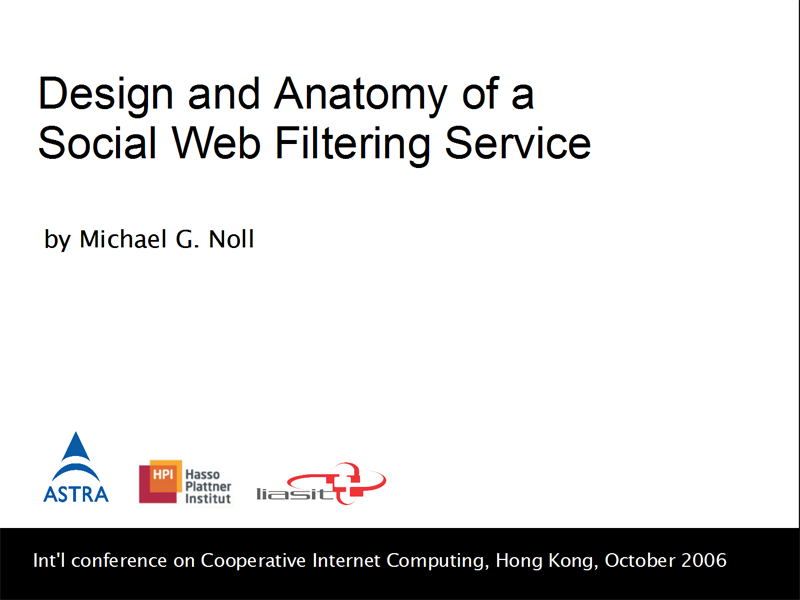Design and Anatomy of a Social Web Filtering Service
My paper Design and Anatomy of a Social Web Filtering Service was published and presented at the 4th International Conference on Cooperative Internet Computing (CIC 2006), Hong Kong, in October 2006.
The paper was published as a full paper in the conference proceedings and also as a book chapter in a book titled Cooperative Internet Computing.
Quick links
- Download the paper as PDF (original paper converted to ACM format)
- Download the presentation (slides) of the paper as PDF
Abstract
The greatest use of the Internet and new online technologies today is for constructive purposes. However, the use of the same technologies to spread illegal and objectionable content has been increasing dramatically over the last years. Internet users have begun to protect themselves and their wards by using so-called web content filters, which allow access to legitimate content and block access to objectionable and unwanted content. In this paper, we describe the design and anatomy of an open architecture for creating a social filtering service and show how it can be implemented. The system is designed to overcome the deficiencies of today’s content rating and filtering systems and frameworks by empowering and involving end users, and to actively support user collaboration and cooperation by using techniques and methodologies with a low cost of participation combined with ease of use. The proposed work improves the quality of information shared by existing collaborative filtering systems by integrating and extending tagging and folksonomy techniques. Data structures and workflows are optimized for scalability and fast service response times and allow the efficient computation and processing of even very large volumes of data. We show how such a service can be used by designing and implementing two client applications for filtering pornographic web content.
Paper
- M. G. Noll, Ch. Meinel: Design and Anatomy of a Social Web Filtering Service (PDF), Proceedings of 4th International Conference on Cooperative Internet Computing, Hong Kong, October 2006, pp. 35-44, ISBN 962-367-541-0
Presentation
My talk given at the CIC 2006 conference is available for download.
Acknowledgements
I would like to thank Alexandre Dulaunoy for many insightful discussions and feedback as well as his support during development of the system prototype. It’s been greatly appreciated, Alex!
Related links
- List of my publications
- The Cookie Monster, or How to Remove Cookies From XMLHttpRequest, lesson learned while I worked on the Mozilla Firefox browser extension used in the paper above

